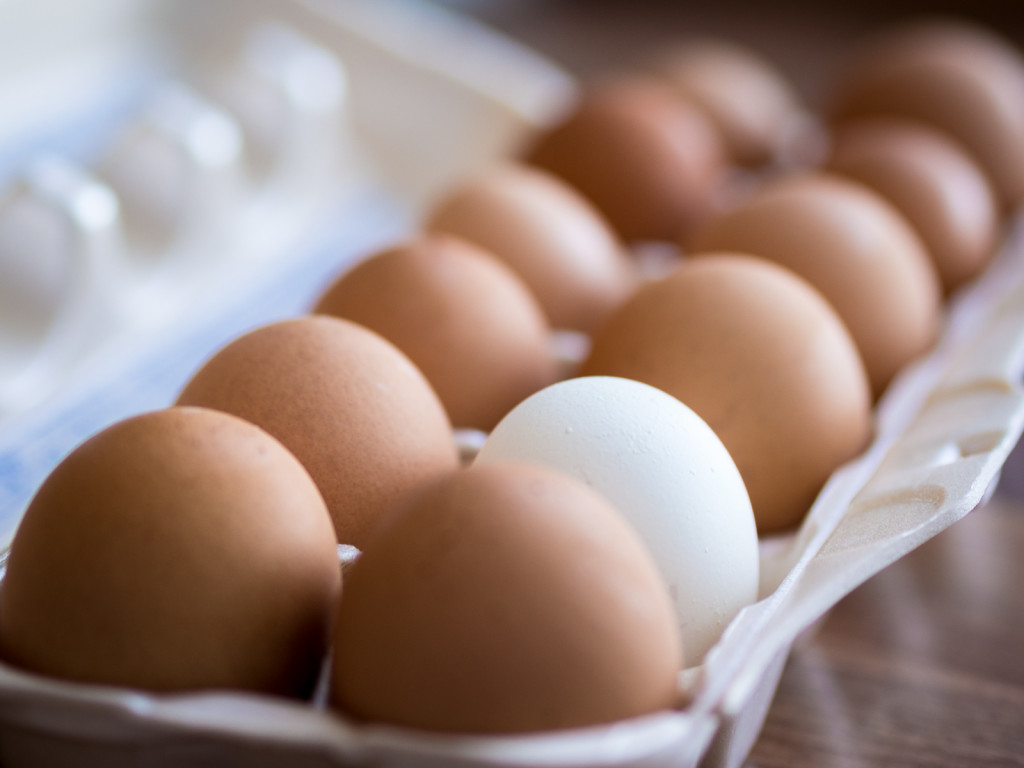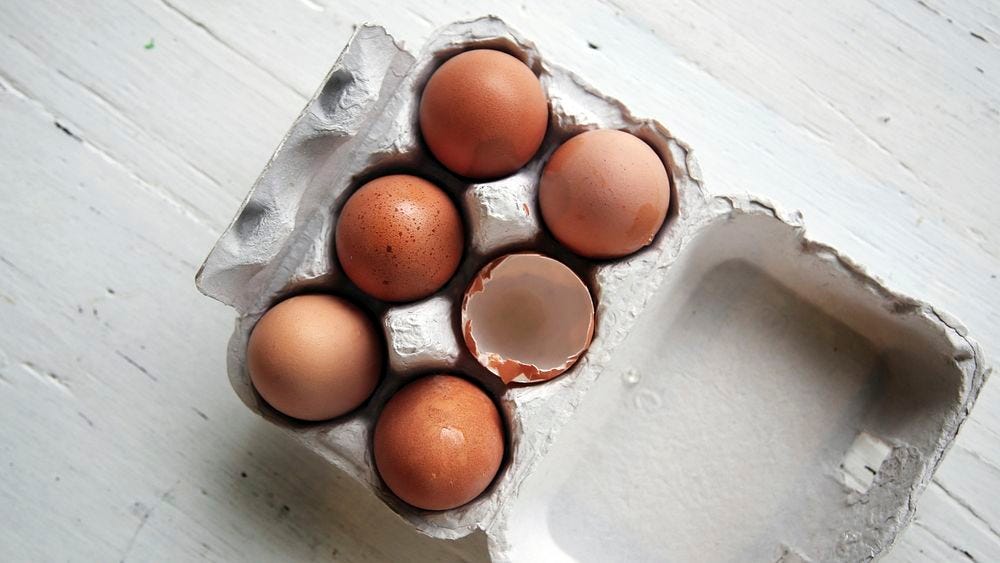
Egg prices had a wild ride for US shoppers. They hit record highs. Then a drop came, maybe just for now. This change made a common food costly for both households and businesses. Knowing why requires looking at things like animal illness and global issues.
For months, shoppers felt sticker shock when buying eggs. Prices climbed dramatically then, making headlines everywhere and affecting breakfast tables and restaurant budgets. This surge was not a minor problem. It meant a big increase in the cost of a widely eaten protein.
Recent data brought shoppers some relief. Prices eased in April, a welcome change. This was the first time in months that it dropped. But will the relief last, people asked? Or should we brace for higher costs? The details show a complex picture, with supply, demand, disease, and rules all mixing in.

1. **The Recent Drop in National Egg Prices**: Consumers saw a welcome change in April. National average egg prices fell then. This was the first time in months. The Labor Dept index said the overall cost dropped by 12.7%.
This drop was the first monthly decrease since October 2024. Prices were still high compared to years ago. But this downward move was a significant shift from the rise seen in the preceding months.
The average price of a dozen Grade A eggs was $5.12 in April. That was a noticeable drop from the record high the month before. This shift provided financial relief to consumers struggling with high costs.
2. **Record Highs Reached Before the Drop**: Before the recent decrease, prices soared. They hit unprecedented levels before April. The average price of a dozen Grade A eggs was $6.23 in March. That was a record high then.
This peak came after price hikes. It followed several months of rising prices, from October 2024 to March 2025. The price of eggs climbed nearly $3, showing the rapid rise that consumers felt.
These record prices made eggs a volatile grocery item, the most volatile in five years, surpassing the changes in bread or milk. The cost reached a point in March where a dozen eggs cost more than ground beef, showing the extreme nature of the price surge.

3. **The Primary Cause: Bird Flu Outbreaks**: The main driver behind the big rise in prices was the widespread Bird Flu outbreak, known as High Pathogen Avian Influenza.
The virus hit US farms hard. Since early 2022, it has spread, infecting millions of egg-laying hens. The severity of the outbreaks necessitated culling, killing entire flocks to stop the spread.
The direct loss of millions of birds cut the supply of eggs for people. This big reduction in the number of hens created an imbalance between supply and demand, inevitably driving prices upward.

4. **Impact of Bird Flu on Supply and Flocks**: Culling infected flocks impacts supply. It has a long-lasting effect on the egg supply chain. Once a flock is culled here, it takes months to raise new hens.
Hatcheries faced challenges in meeting demand for new birds, worsening the shortage. Cleaning farms and raising new birds to egg-laying age takes time; it can take as long as one year. The effects of the outbreak are felt for a long while.
Even one outbreak at a big farm can affect the overall supply significantly. These farms have millions of birds. For example, outbreaks at two farms in April, in Ohio and South Dakota, affected more than 927,000 hens, showing the scale of disruption from just a few spots.

5. **Factors Contributing to Recent Price Decline**: Factors contributed to the recent price drop. In April, it was a welcome change. A key element was farmers working with the USDA to implement stronger biosecurity measures at farms.
Biosecurity measures help prevent bird flu. They appear to be showing some success, with fewer outbreaks on commercial farms. The USDA reported 59 outbreaks in February, which fell to 12 in March and just three in April.
The import of more eggs also helped. They came from South Korea, Turkey, and Brazil, boosting supply in the US market. Additionally, energy and feed costs fell. These are necessary for heating and caring for chickens, which can translate into lower consumer prices.

6. **The Role of Consumer Behavior**: Changes in how consumers react matter. High prices influence market dynamics and often contribute to price adjustments.
When a dozen eggs cost more than what people used to pay, it can lead to a fall in demand.
If consumers buy fewer eggs or find cheaper alternatives instead, social media has shown examples like this, such as using potatoes or marshmallows to make Easter eggs. This reduced demand then puts downward pressure on prices.
The USDA noted that egg demand was lagging, improving slightly before the Easter peak but still behind recent years. Major retailers skipped holiday sales, and egg promotions were not happening. The supply had just recovered enough for consistent offerings, not for sale prices.

7. **Future Price Uncertainty and Predictions**: Despite the recent price drop that has been seen, experts’ views differ widely. They were asked whether lower egg prices would persist.
The USDA still anticipates a rise in egg prices this year and predicts a high increase of 54.6% by 2025.
This prediction is based on the assumption that farmers might still struggle with Bird Flu. Economist Bernt Nelson suggests that if biosecurity measures work and cases remain low, egg prices could possibly stay down.
Other factors will also play a role. The domestic production rate matters here, and broader economic conditions matter too. There is uncertainty about future outbreaks, which makes predictions hard right now. Consumers wonder about egg costs in the future.
8. **Other Contributing Factors to Price Volatility**: Beyond Bird Flu-related supply issues, other elements add complexity. Uncertainty about egg prices remains high.
Cost inputs like energy and goods used for chicken feed always fluctuate, based on global markets and events.
Even geopolitical factors matter here. For example, a peace deal between Russia and Ukraine could lower feed costs for chickens, which impacts egg production costs.
Changes in consumer behavior also matter, related to overall grocery prices.
Experts also point to changing tariff policies as a source of uncertainty for prices. High tariffs on eggs or production inputs could lead to cost increases.
Most eggs in the US are domestic. However, the cost of production materials for imports, such as cleaning supplies and cartoning, could rise due to tariffs. Ultimately, this means higher costs for consumers.
Further major shocks to the supply system due to future outbreaks seem possible. Current lower prices may not be sustainable.
Egg prices nationally are complex, influenced by many factors. Disease, how producers operate, and shoppers’ habits all play a part. A big legal and political fight in Arizona also makes things uncertain there. This state issue shows how rules can interact with market forces, and supply chains can also get tangled up. This might change costs for shoppers.
Let’s look at what’s happening in Arizona now. We explore the main rule causing trouble. The legal challenges facing it are important, and political moves around the rule matter too.

9. **The Arizona Cage-Free Rule and the 2022 Regulation’s Basis**: A state rule initiated this whole issue. The Arizona Department of Agriculture enacted the rule in 2022. It aimed to change how egg-laying hens were housed, ensuring they had more space than before. Initially, eggs sold were required to come from hens provided with adequate space, specifically a minimum of one square foot of floor space per hen, totaling 144 square inches. This was significantly more space than the 62 square inches previously allowed.
The rule introduced another requirement. Starting this January, hens were supposed to be housed cage-free. This broad rule was intended to cover many producers, including companies shipping eggs to the state of Arizona. The goal was to set a standard for all eggs. However, this rule impacted the supply chain for Arizona shoppers.
The Department of Agriculture estimated a cost increase, projecting an additional cost of one penny to 3.25 cents per egg. While this may not seem like a significant cost per egg, they considered the impact on consumers. Given that the average person consumes slightly more than 270 eggs annually, this could mean an additional 2.71to 8.79 per year for each consumer.

10. **The Lawsuit Challenging the Authority: Grant Kruger’s Contention**: Quickly, the 2022 cage-free rule sparked a legal fight. Grant Kruger filed a lawsuit in 2023. He operates restaurants in Tucson, including Union Public House, Reforma Modern Mexican Mezcal + Tequila, and Proof Artisanal Pizza and Pasta. Kruger is worried about the financial impact on his businesses. He argues that the egg rule adds costs, as buying cage-free eggs costs him more annually.
Kruger claimed that the state department went too far, exceeding its legal authority in making this rule. His lawsuit focused on the fact that the Legislature never granted the authority for chicken housing rules. He argued that the agency acted outside its jurisdiction, making the rule invalid by implementing these space requirements.
Being a major buyer gave Kruger standing in court. Kruger buys 578 cases of eggs per year, totaling 104,400 eggs. Using the higher cost estimate, this amounts to an additional $3,380 annually. Judge Scott Blaney stated last year that this potential cost gave Kruger legal standing to bring this lawsuit.

11. **The State’s Defense Strategy: Arguing Against Standing and Impact**: Lawyers for the Arizona Department of Agriculture fought back. They first disagreed with Kruger’s legal standing, challenging the judge’s earlier ruling. But they had another plan. It focused on the current state of the rule. They argued that it currently lacked impact.
The state attorneys told Judge Blaney something. The 2022 rule was not being enforced currently. The requirements were not being imposed. No large cage space rule was in effect. Cage-free conditions were not being forced on producers. So, they argued, the rule did not impact egg costs now.
Their point was simple for the judge. If the rule was not enforced, it had no cost effect. Kruger’s restaurants faced no damage from the rule. This was a key part of their argument. They argued for a delay in case action. The state wanted time to change the rule.

12. **The Request for Delay: State Attorneys Seek Time from the Judge**: State lawyers used the fact of non-enforcement. They also knew that changes might occur. They asked Judge Blaney for a delay in time. They wanted him to wait to rule on the legality of the situation. This was central to their plan, as it allowed the executive branch to start revising the rule.
New court papers made this clear. State attorneys stated that the department was not enforcing the rule. They linked this to the high prices of eggs, arguing that implementing the rule would further harm the already high prices, especially with bird flu outbreaks occurring, which had damaged the egg supply system.
The argument for a delay rested on the case becoming moot. They shared their thoughts with Judge Blaney, stating that his ruling on the existing rule could be rendered useless by the time a new rule was passed, making a quick invalidation of his ruling possible. They argued that a delay would be a more efficient use of public money and would also save the judge’s time.

13. **Governor Hobbs’ Intervention and the Recrafting of the Rule**: Court fights were intertwined with state executive actions. Governor Katie Hobbs issued a directive in March. This directive instructed the Department of Agriculture to take action. She directed the agency to recraft the controversial rule, which was the subject of the lawsuit.
The governor’s instruction did not occur in isolation. It came at a time of high egg prices. The lawsuit was also ongoing at that time. The directive halted the current path of the rule, stopping its movement towards statewide enforcement. The main goal of the recrafting was clear: to push back the effective date of the rule.
The recrafting was also expected to clarify certain aspects. It suggested changes to the substance of the rule. Modifications to the requirements could occur. The process for the revised rule had already started. The Department of Agriculture might vote on it in August, and implementation was scheduled for October. This timeline provided state lawyers with something concrete. They said that the legal landscape was changing rapidly.

14. **The Extended Delay in Enforcement and the 2032 Target**: The governor’s directive had significant consequences. It changed when the rule’s requirements would take effect. The recrafting initiated by Governor Hobbs set a new date. The new date for cage-free enforcement was 2032. This represents a substantial delay, moving the date back by many years.
Before the governor intervened, there had been some changes. The agency agreed in November to postpone the start of enforcement. They delayed it until 2027. This delay was due to the Avian flu problem. Forcing producers to change their systems worsened the situation. It made supply disruptions more severe and caused consumer prices to rise even higher.
The March directive pushed the date even further out. It added five years beyond 2027. This move demonstrated the state’s clear intent to give producers much more time in the market to adapt to new housing requirements now, so that a smoother transition might occur, with less concern about price shocks resulting from the rule.

15. **The Legislative Challenge: Senator Bolick’s Attempt to Strip Authority**: Another layer of complexity was added here. Senator Shawnna Bolick attempted legislative action. She wanted to remove the department’s authority entirely and prevent them from ever making rules on chicken housing. This law would settle the matter directly, bypassing the rule-making process and the court case completely.
Senator Bolick said her law would help people. It would provide relief to Arizonans facing high grocery costs. The Phoenix Republican made a statement, saying that the cause of the bird flu couldn’t always be fixed. Her bill might lower costs and also eliminate daily limits on egg buying. Her goal was to change consumer prices quickly.
Oddly, when pushing the bill, she overlooked some facts. The Department of Agriculture had already stopped enforcement. No producers were currently forced to comply with the rule. The measure eventually reached Governor Hobbs. The governor said there was no immediate need to change the law. She felt that the department’s authority was useful and that regulating space standards would protect the health of animals in the future.

16. **The Potential Outcomes: Judicial Decision vs. Legislative Action**: Legal, executive, and legislative actions create many paths. What will happen with Arizona’s cage-free rule? The lawsuit is ongoing right now. Judge Scott Blaney can still rule. He will decide on the legality of the 2022 rule. Did the Department of Agriculture exceed its power in making it?
State attorneys said the judge’s decision could be complicated. It might be less impactful later. Governor Hobbs’s action could change things. If a new rule is enacted in October, that will matter. The lawsuit on the original rule might lose its meaning. Plaintiffs might file a new lawsuit. Challenging the new rule will take time. This is a fear that state attorneys have.
The future Arizona rule may depend on timing. Will the judge rule before the new one is finalized? Or will the executive process overtake the court case? Senator Bolick’s legislative attempt has stalled for now. But it showed that a permanent solution is possible: to strip the department of its authority fully and change the state’s ability to regulate hen housing forever, regardless of what the judge or governor does.
Egg prices fluctuate up and down. They are volatile for shoppers these days. Disease outbreaks cause big swings. Market changes happen unpredictably. National trends show little relief lately. Arizona’s specific situation is complex. Legal fights and political debates are involved too. It shows how local rules add a unique dimension.
Judge Blaney’s decision on the rule is upcoming. The governor’s plan is to recraft the rule and delay enforcement to 2032. Future legislative efforts might emerge again. These things will shape the cost of eggs for Arizonans. Availability matters on breakfast tables. It remains a situation worth watching closely.
Related posts:
State wants a delay in legality ruling for cage-free hens law
Egg prices fell for the first time in months. Will they get any cheaper?
Connecticut egg prices drop after record highs over the winter, but still dollars above 2024 prices






